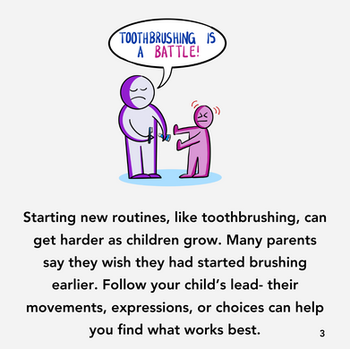
Using toothpaste
Overview
Toothpaste contains fluoride, which is important for strengthening teeth and preventing decay. Research shows that fluoride toothpaste is the most crucial part of brushing. That’s why we recommend focusing on getting the toothpaste onto the teeth. Think of it as the key step in keeping smiles strong and healthy, and the top defence against tooth decay. For children under three, use a smear of toothpaste. For children aged three and over, use a pea-sized amount. It’s best to brush twice a day. We understand that for some autistic children, brushing with toothpaste can be overwhelming due to its sensory properties. The flavour, colour, texture, and smell can all contribute to discomfort. Toothpastes vary widely, and what might seem like minor differences to us can feel intense for a child with sensory sensitivities. For example, smells can be overpowering, and the taste might be bitter, like a burning sensation, or uncomfortably cold. The texture can also be problematic, feeling slimy, slippery, or squishy, and it changes unpredictably with temperature and when mixed with saliva. Your child may have strong colour preferences for what they eat or put in their mouth, and the toothpaste might not fit these preferences. Additionally, if the toothpaste slips off the brush, it can be upsetting for a child trying to understand its whereabouts and how to manage it Below, you’ll find advice from other parents and professionals, plus tips on choosing the right toothpaste, introducing toothpaste and toothpaste troubleshooting.
Toothpaste tips from parents and professionals
Explore further
Key messages










